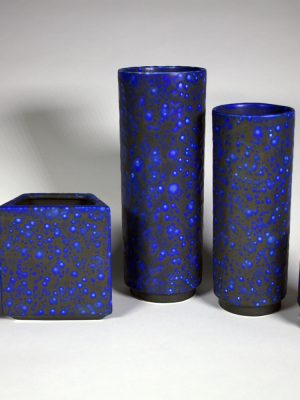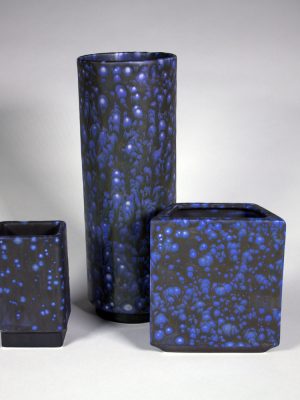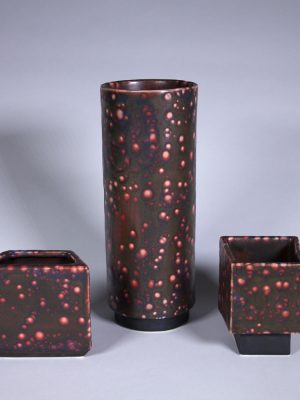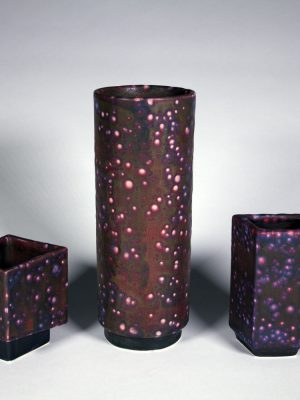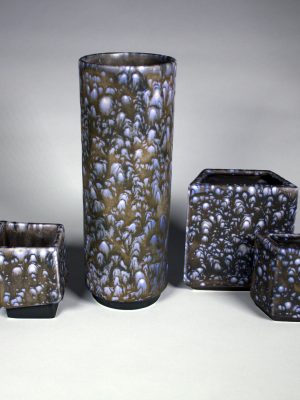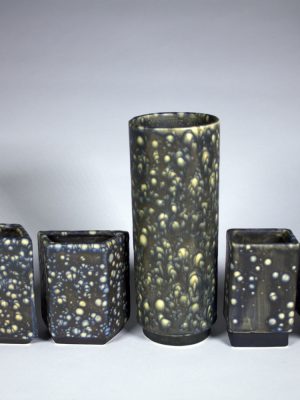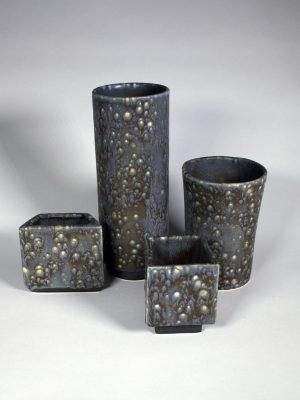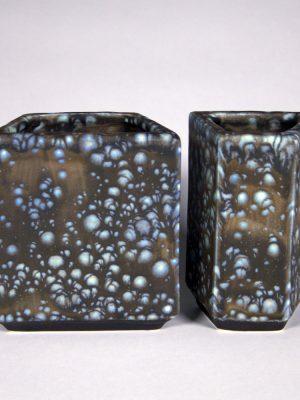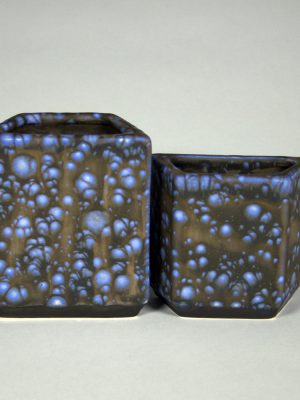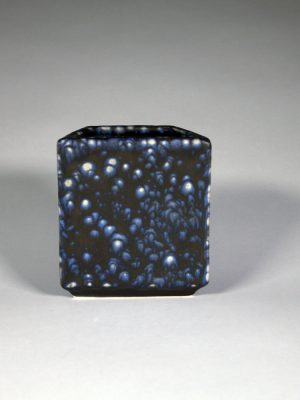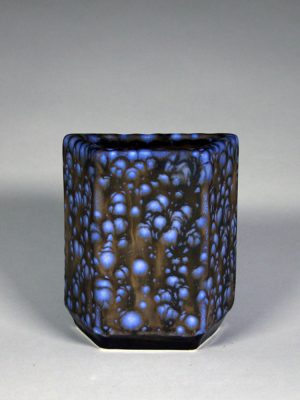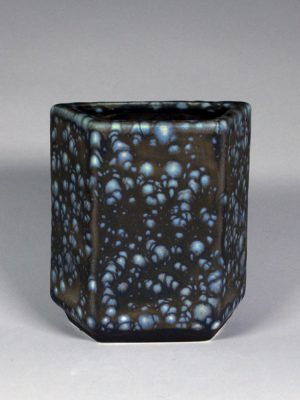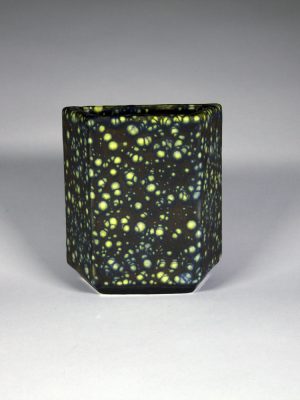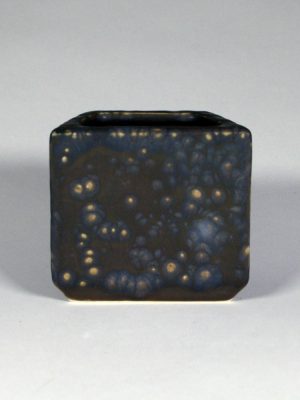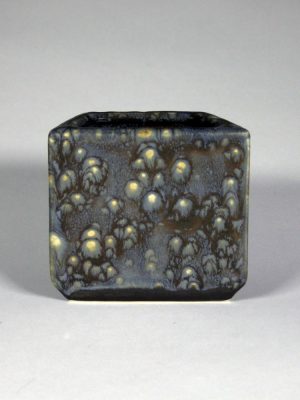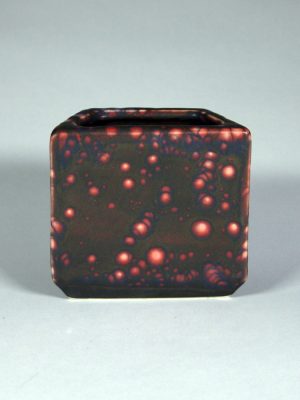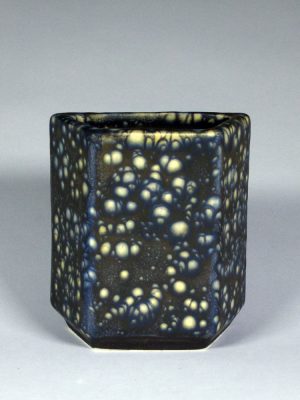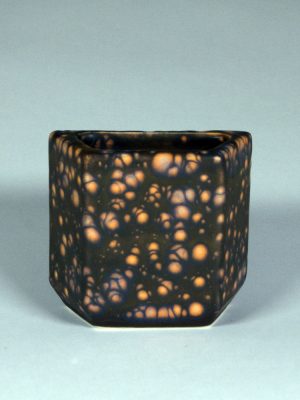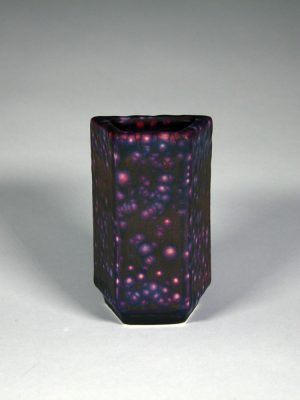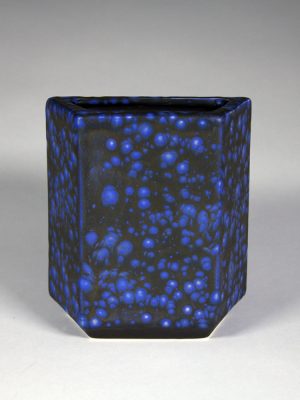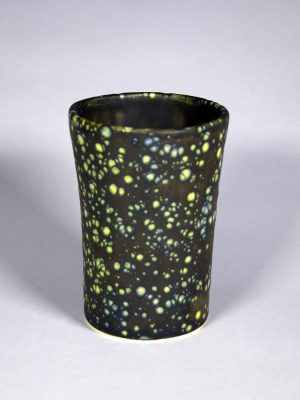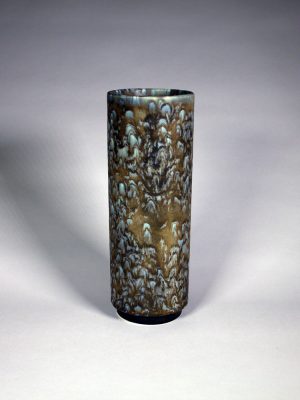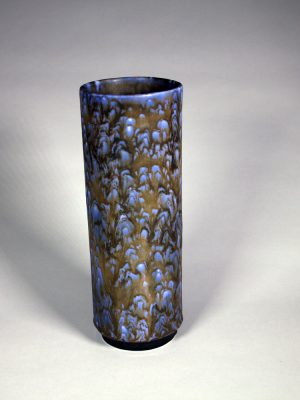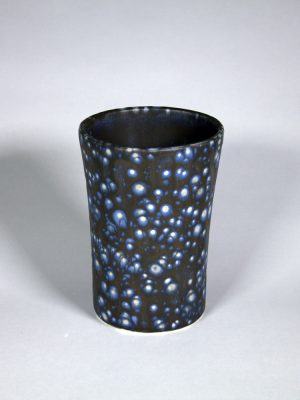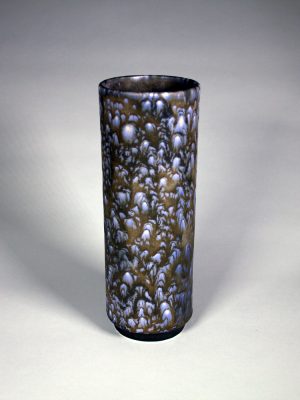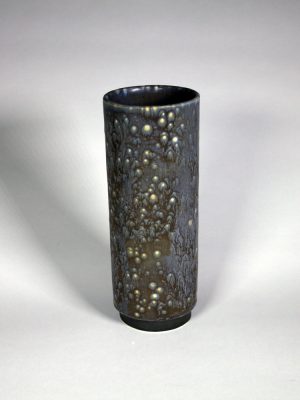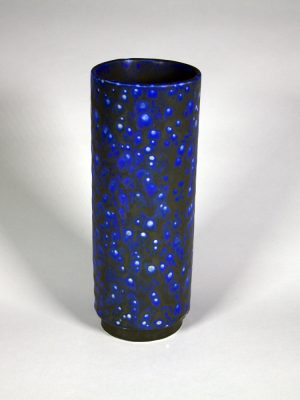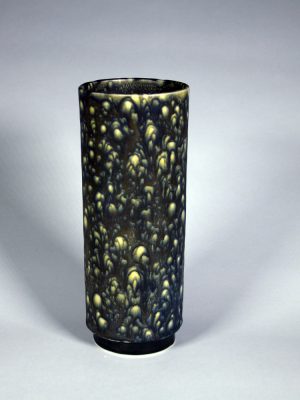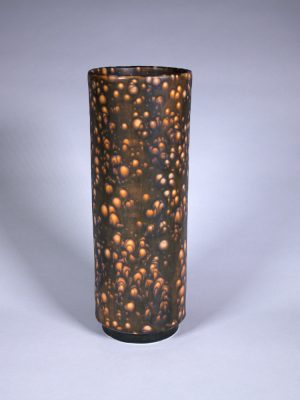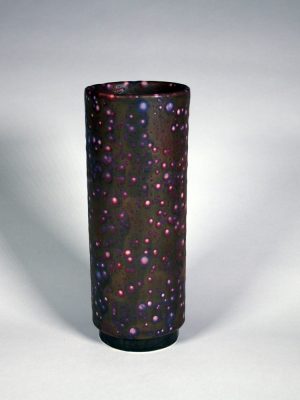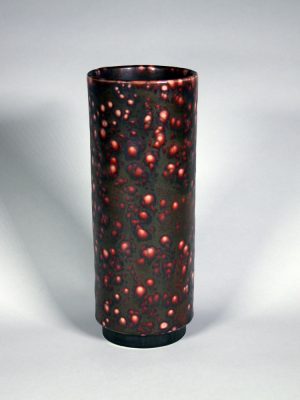The firings went very well. Pleased with the results. The window at the Stoneware Gallery went up on Friday afternoon. It felt really good to put everything in place. It is an an amazing collection. Unlike any you will see elsewhere. Until February 7 unless it sells out earlier.
Thirty five was too many images for one slider. The first has groups, the second singles.
Cobalt Carbonate gave a dramatic surface. Intense blue and white craters set against the gold bronze that the black has turned. Stable surface with little flow.
Orange stain made the surface flow more than the blue but less than some of the others. The craters appear soft. The black background is squeezed into tight lines when the density of the polymer additive is more closely packed. There appear to be lines and patterns in the distribution of the polymer additive that I was not aware of when brushing.
Purple stain made for a soft flowing surface. More lines and patterns. Less sharp and defined than orange. The white spots are the exposed porcelain where the additive has burned right through the glaze.
Bright Red stain made dark red craters on a bronze background. It also caused some pitting in the surface of the glaze. This must be due to the refractory nature of the zirconia crystals encapsulating the cadmium.
Brick Red stain made for more violet looking craters. Bronze background with pitting.
Vanadium Yellow stain acted like the orange in terms of surface flow. Golden yellow spots with a dark blue to bronze background.
Praseodymium Yellow stain made for yellow-green spots with more defined edges. Surface is dark blue bronze and very stable.
The Dark Grey stain may have made for a more fluid surface but there is more to it. This is the exception. I mixed this stain into a similar but different base for the undercoat because I like the colour response better. Some or all of the flow could be due to this other glaze in its reaction to Black Hole.
Neodymium Oxide gives a light purple. It was the most fluid of all. Of course it’s also light sensitive and will look baby blue in a different setting.
A light grey stain gave the medium blue and white spots on what looks like a dark blue background.
Praseodymium Oxide gave soft blue green craters on a dark brown background.
Erbium Oxide gave pink-violet-blue spots on a flowing ground of light bronze.
Cobalt Free Black stain gives soft blue brown spots with centres of light tan on dark brown background.
These glazes ignite in me a sense of wonder. I want to see more objects with them. I am getting started on a couple new moulds to add to this collection. Black Hole take me where you will.

